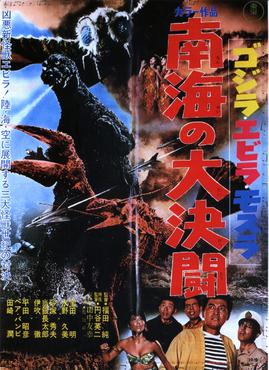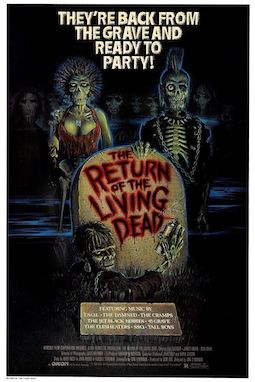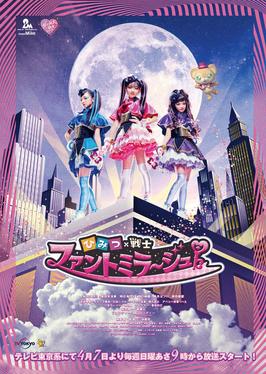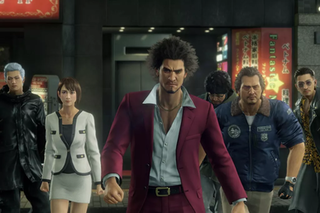
Ebirah, Horror of the Deep is a 1966 Japanese kaiju film directed by Jun Fukuda and produced and distributed by Toho Co., Ltd. The film stars Akira Takarada, Kumi Mizuno, Akihiko Hirata and Eisei Amamoto, and features the fictional monster characters Godzilla, Mothra, and Ebirah. It is the seventh film in the Godzilla franchise, and features special effects by Sadamasa Arikawa, under the supervision of Eiji Tsuburaya. In the film, Godzilla and Ebirah are portrayed by Haruo Nakajima and Hiroshi Sekita, respectively.

Takeshi Kitano, also known as Beat Takeshi in Japan, is a Japanese comedian, actor, and filmmaker. While he is known primarily as a comedian and TV host in his native Japan, he is better known abroad for his work as a filmmaker and actor as well as TV host.

Kiyoshi Kurosawa is a Japanese film director, screenwriter, film critic, author, actor, and professor at Tokyo University of the Arts.

Guinea Pig is a Japanese horror series that consists of six films, as well as two making-of documentaries. The series' original concept, was envisioned by manga artist Hideshi Hino. The series primarily focuses on situations involving graphic violence, gore, mutilation, torture, and murder.

Return of the Living Dead Part II is a 1988 American comedy horror film written and directed by Ken Wiederhorn, and starring Michael Kenworthy, Marsha Dietlein, Dana Ashbrook, Thom Mathews, James Karen, and Phil Bruns. It is the first of four sequels to The Return of the Living Dead.

Versus is a 2000 Japanese zombie action film directed and co-written by Ryuhei Kitamura. The film was an independent co–production between Kitamura's company Napalm Films and Wevco Production in association with KSS and Suplex. In the film, a nameless prisoner, a nameless female and her Yakuza abductors fend off zombies in a forest that resurrects the dead while the Yakuza's mysterious leader attempts to open a supernatural gate hidden within the forest and seize its dark power.

The Return of the Living Dead is a 1985 American comedy horror film written and directed by Dan O'Bannon from a story by Rudy Ricci, John Russo, and Russell Streiner, and starring Clu Gulager, James Karen, Thom Mathews, and Don Calfa. The film tells the story of how a warehouse owner, accompanied by his two employees, mortician friend and a group of teenage punks, deal with the accidental release of a horde of unkillable, brain-hungry zombies onto an unsuspecting town.

A zombie is a mythological undead corporeal revenant created through the reanimation of a corpse. In modern popular culture, zombies are most commonly found in horror genre works. The term comes from Haitian folklore, in which a zombie is a dead body reanimated through various methods, most commonly magical practices in religions like Vodou. Modern media depictions of the reanimation of the dead often do not involve magic but rather science fictional methods such as fungi, radiation, gases, diseases, plants, bacteria, viruses, etc.

Yakuza 3 is a 2009 action-adventure game developed and published by Sega for the PlayStation 3. The third main entry in the Like a Dragon series, it was released in Japan and South East Asia on February 26, 2009, and in North America and Europe on March 9, 2010, and March 12, 2010. A remaster containing all cut content was released in Japan on August 9, 2018, and worldwide on August 20, 2019, for the PlayStation 4, and on January 28, 2021, for Windows and Xbox One. A sequel, Yakuza 4, was released on March 18, 2010, in Japan.

Like a Dragon, formerly known outside of Japan as Yakuza, is a video game franchise created, owned and published by Sega. It incorporates elements of the action-adventure, beat 'em up, and role-playing genres.

Yakuza: Dead Souls is an action-adventure survival horror video game developed and published by Sega for the PlayStation 3. The game is a spin-off of the Like a Dragon series. The game was originally scheduled for release in Japan on March 17, 2011 two days after the release of Yakuza 4 in North America; however, after the 2011 Tōhoku earthquake and tsunami, the release was indefinitely delayed. A new release date, setting the game's release for June 9, was announced on April 7. The game was also released in North America and Europe by Sega in March 2012. The gameplay and themes are based on another Sega horror-themed rail shooter called The House of the Dead series.
Natsuki Ozawa is a Japanese singer, actress and AV actress who has appeared in mainstream films and adult videos.
Events in the year 1972 in Japan. It corresponds to Shōwa 47 (昭和47年) in the Japanese calendar.

Kōji Mitsui was a Japanese actor. He appeared in more than 150 films from 1925 to 1975, including 29 of Kinema Junpo’s annual Top-10 winners and three of its 10 best Japanese films of all time. In 2000 the magazine named him one of the 60 most important Japanese actors of the 20th century.

Secret × Heroine Phantomirage! is a Japanese television drama series that aired from April 7, 2019, to June 28, 2020. It is the third installment of the Girls × Heroine Series produced by Takara Tomy and OLM, Inc. with the assistance of Shogakukan and EXPG Studio. The series stars Minami Hishida, Kira Yamaguchi, Toa Harada, and Ran Ishii. Additional cast members include Mandy Sekiguchi, Tsubasa Honda, and Takumi Saitoh, with narration provided by Toshiyuki Toyonaga. The plot is centered on Phantomirage, a group of middle school gentleman thieves who fight the Gyakugyaku Police, and steal the treasures in people's hearts. This was the last installment of the Girls × Heroine series to be produced in the Heisei period, and the first to be produced in the Reiwa period.
Pretty Cure Miracle Universe is a 2019 Japanese animated action fantasy film based on the Pretty Cure franchise created by Izumi Todo. The film is directed by Yukio Kaizawa, written by Isao Murayama, and produced by Toei Animation. The film was released on March 16, 2019.

Japanese video game developer Sega's Yakuza media franchise, known as Ryū ga Gotoku in its native Japan and other Asian territories, features an extensive cast of characters. This article describes notable characters who appear in the Yakuza main series video games and associated remasters or remakes, with characters sorted by organizations or groups according to the original works. The English-language adaptation equivalents are mentioned when available.
The Army of the Dead franchise consists of American zombie-action horror installments, which serve as spiritual sequels to the 2004 re-imagining of Dawn of the Dead (1978). The franchise consists of a streaming release film that was also released in theaters for a limited time, and a spin-off prequel film, with future installments in various degrees of development.
Atsushi Muroga is a Japanese film director and screenwriter. He is known for his action and yakuza films, including Score (1995), Junk (2000), and the Gun Crazy series (2002–03), as well as for directing Wangan Midnight: The Movie (2009), a film adaptation of the manga series of the same name.

League of Gangsters is a 1963 Japanese black-and-white crime action film directed by Kinji Fukasaku starring Ryōhei Uchida and Kei Satō. It was Uchida's first starring role in a film.















